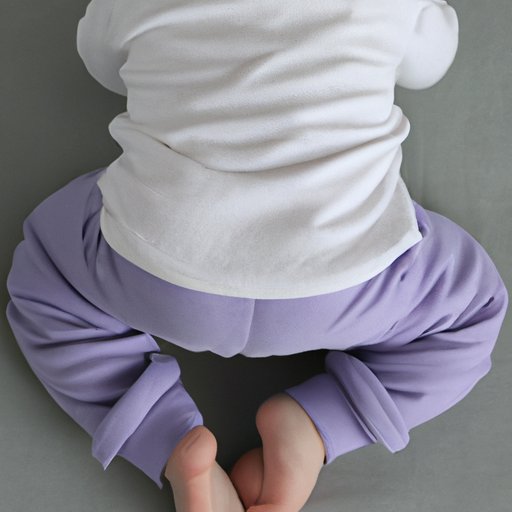
Introduction
As a parent, seeing your baby grow and reach important developmental milestones is a joyous experience. One of these milestones is when they start to bear weight on their legs and take their first steps. But when is the right time for your baby to start doing this? In this article, we will explore the different factors to consider when encouraging your baby to bear weight on their legs, the benefits of doing so, and common mistakes to avoid.
Is It Too Soon for Your Baby to Bear Weight on Their Legs?
Before teaching a baby to stand on their legs, it’s important to make sure they are ready to do so. Signs that a baby is ready to bear weight on their legs usually occur around the 4- to 6-month mark and include things like pushing up on their arms during tummy time, sitting up unsupported, and supporting their full weight on their legs when held in a standing position.
Encouraging your baby to bear weight on their legs comes with many benefits, such as building muscle strength, improving coordination, and promoting bone growth. However, it’s important to remember to not force your baby to stand up or walk if they are not ready.
The Dos and Don’ts of Helping Your Baby Stand and Take Their First Steps
When your baby is ready to bear weight on their legs, you can help them by properly holding them in a standing position. Place one hand under their armpit and the other hand under their diaper area to support their weight. It’s important to make sure their feet are flat on the ground and that they are not slouched or leaning too far forward.
You can start encouraging your baby to put weight on their legs around 4 to 6 months, but avoid doing it for long periods of time, as it can be tiring and overwhelming for your baby. Gradually increase the amount of time they spend standing as they become stronger.
Common mistakes to avoid when helping a baby stand include not supporting their weight properly, forcing them to stand for too long, and using tools like walkers, jumpers, or exercise saucers which can hinder proper development. It’s important to keep in mind that every baby develops at their own pace and to not compare your baby’s progress to others.
The Importance of Tummy Time for Your Baby’s Development
Tummy time is an important exercise for babies as it helps to strengthen their core muscles and prepares them for bearing weight on their legs. When doing tummy time, place your baby on their stomach on a flat surface, such as a play mat, and gently encourage them to lift their head up toward their chest. As they become stronger, you can also encourage them to push up on their arms and eventually start crawling.
5 Fun Ways to Get Your Baby Excited to Bear Weight on Their Legs
Making standing and bearing weight on their legs a fun and stimulating activity can encourage your baby to want to do it more. Try playing games like “airplane” where you lift your baby up and down while making airplane noises or hold a toy just out of their reach to encourage them to stand up and reach for it.
Using a mirror can also be a great way to get your baby excited about standing up. Placing a mirror in front of them while they stand can help them see their reflection and enable them to practice standing while monitoring their movements.
What to Expect: Milestones and Developmental Stages for Your Baby
Babies reach developmental milestones at different times, and it’s important to remember that every baby will develop at their own pace. At around 2 months, your baby may start to hold their head up when lying on their stomach. At 4 to 6 months, they may start to sit up unsupported and bear weight on their legs while being held. At 6 to 10 months, they may start to crawl and pull themselves up to a standing position. And finally, at around 12 months, they may start to take their first steps.
Remember, all these milestones are general guides. Some babies may hit them earlier or later than others and still be developing perfectly fine.
How to Spot and Avoid Common Baby Walking Mistakes
One common mistake parents make is relying too much on tools like walkers, which can delay a baby’s natural development for bearing weight on their legs. Additionally, not supporting your baby’s weight properly and forcing them to walk before they’re ready can also hinder proper development.
To avoid these mistakes, focus on providing your baby with plenty of tummy time, holding them properly in a standing position, and encouraging them to bear weight on their legs gradually over time.
The Benefits of Babywearing for Encouraging Leg Strength and Development
Babywearing has many benefits when it comes to leg strength and development. Keeping your baby close to your body promotes core strength and encourages them to bear weight on their legs, especially when they’re moving around and exploring their surroundings. Choosing a comfortable and ergonomic baby carrier can make it easier to wear your baby for longer periods of time and promote proper development.
Conclusion
Helping your baby develop proper leg strength and reach important developmental milestones is an exciting and rewarding experience. Remember to focus on encouraging your baby gradually and not force them to stand or walk before they’re ready. By following these tips and avoiding common mistakes, you can promote healthy development and form a lasting bond with your baby.




